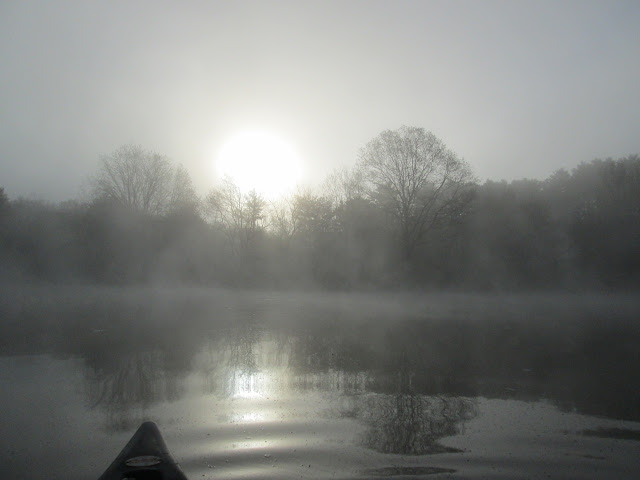Today, there she is in the backyard. She stood quite a deep hole. She has mud on her nose. Her shell is starting to get dry on the top so she's probably been here for a while. It seems to be a fairly slow process, as is most of a turtle's life when on land! When I first looked at her she was laying eggs, I assume she was anyway, she was just sitting in the hole and being very still.
 |
| Snapping Turtle laying eggs |
The snappers looks so prehistoric so long scaly tail. Her legs look powerful; that makes me want to try to get another picture of those back legs.
She sticks her back leg way down deep into this hole, maybe 6 inches down. (You can see that in the picture - her right hind leg is in the hole she has made) I wonder if that's where she just actually lays the egs. I'll have to do some research and see how many legs they lay at one time. As I recall it's quite a few because of predation. Most of the eggs don't hatch they get eaten by coons and such, before they can become ready and hatch or the little turtles get eaten as they try to get to the pond.
(I have an awfully busy morning and I really don't have time to watch this, but I can't tear myself away. I'm using the Dragon software on my iPhone to dictate this entry as I watch the turtle. Some times technology is pretty cool.)
I wonder if she is tamping the egg down as she sticks her foot in the hole or if she's using her toes and covering the egg or exactly what's going on down there. Certainly can't tell from this distance.
Let's hear it for iPhones. I asked Siri to find information for me on snapping turtles laying their eggs and here's what she came up with from: http://www.naturealmanac.com/archive/snappers/snappers.html
Female snapping turtles have the ability (as do most turtles) to plan their pregnancies. Sperm cells from the male survive in the female's reproductive tract for up to three years in a specialized duct so that when food is plentiful and life is good she can fertilize any eggs she happens to be carrying. When the eggs ripen (usually in mid June in our area) she develops a wanderlust and leaves the water (one of the few times these turtles willingly leave the water) to search for a suitable location to lay her eggs.
Snapping Turtles will sometimes lay their eggs considerable distances from the water - up to a quarter mile away has been recorded. Once the site is chosen she digs a bottle-shaped hole with her hind feet as deep as she can reach - which can be up to eight inches. She then lays from ten to thirty ping pong ball sized eggs and covers them with the previously excavated soil grading it smooth with her lower shell and tail. Depending on the temperature, rainfall and moisture content of the nest the eggs the eggs hatch in from 55 to125 days after laying. In northern climes some nests overwinter with hatching occurring in the spring of the following year. Around here most nests have hatched by the end of September.
The hatchling baby snappers (assuming the nest isn't discovered and eaten by a passing skunk or raccoon) burrow up through the covering soil and then seek the nearest body of water. In practical terms this means moving downhill until water is encountered. It's during this over- land migration that the young turtles are most vulnerable. Even though most of the migrations occur at night wandering raccoons, skunks and even owls pick off as many hatchlings as they can detect for a tasty meal. Those that actually make it to water are still not safe. Snakes, turtles, herons and other snapping turtles all find the youngsters a tasty treat and make the most of any encounter. Perhaps one turtle hatchling in twenty will live to see its second year.
I have GOT to get packed up for tonight's gig before I leave for the stable -- I'll edit this tomorrow. Very cool....










